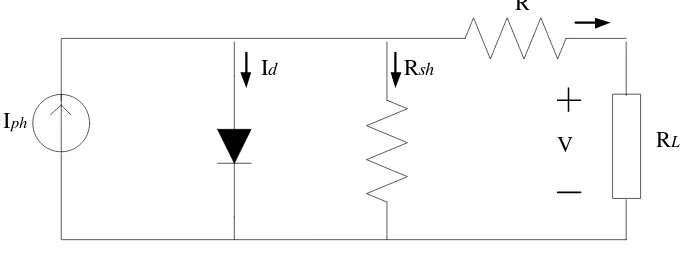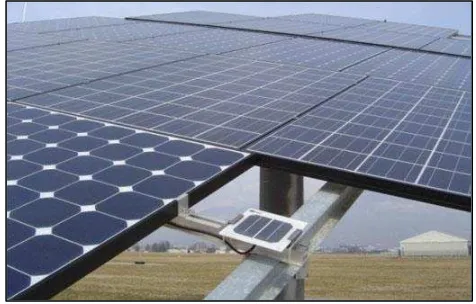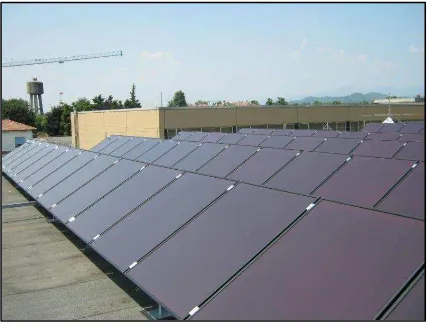FACULTY OF ELECTRICAL ENGINEERING
UNIVERSITI TEKNIKAL MALAYSIA MELAKA
FINAL YEAR PROJECT REPORT
DUAL MAXIMUM POWER POINT TRACKING; FOCUS ON DYNAMIC MPPT
NAME : MOHAMMAD AZROL BIN AHMAD @ MAZLAN
MATRIX NO. : B011010380
COURSE : POWER ELECTRONICS & DRIVES
“I hereby declare that I have read through this report entitle “Dual Maximum Power Point Tracking (MPPT); focus on Dynamic MPPT” and in my opinion this thesis is sufficient in
terms of scope and quality for awarding the degree of Bachelor of Electrical Engineering (Power Electronic & Drive)”
Signature : ………....
Supervisor’s Name : Mr. Musa Bin Yusup Lada
DUAL MAXIMUM POWER POINT TRACKING; FOCUS ON DYNAMIC MPPT
MOHAMMAD AZROL BIN AHMAD @ MAZLAN
A report submitted in partial fulfilment of the requirements for the degree
of Bachelor of Electrical Engineering (Power Electronic & Drive)
Faculty of Electrical Engineering
UNIVERSITI TEKNIKAL MALAYSIA MELAKA
I declare that this report entitle “Dual Maximum Power Point Tracking; focus on Dynamic MPPT” is the result of my own research and work, except as cited in the references. The
report has not been accepted for any degree and is not concurrently submitted in candidature of any other degree.
Signature : ………
ACKNOWLEDGEMENT
Firstly, I would like to express my appreciation and gratitude to my supervisor, Mr Musa Bin Yusup Lada who is always help and support me in terms of knowledge and skills. As long as this final project started, he provides much information and guidance to apply on it.
ABSTRACT
ABSTRAK
TABLE OF CONTENTS
CHAPTER TITLE PAGE
ACKNOWLEDGEMENT ii
ABSTRACT iii
TABLE OF CONTENTS v
LIST OF TABLES viii
LIST OF FIGURES ix
LIST OF APPENDICES Xi
LIST OF ABBREVIATIONS xii
1 INTRODUCTION 1
1.1 Project Introduction 1
1.2 Problem Statement 2
1.3 Objectives 3
1.4 Project Scopes 3
2 LITERATURE REVIEW 4
2.1 Solar Energy 4
2.2 Photovoltaic 5
2.3 Types of Photovoltaic 6
2.4 Method of Maximum Power Point Tracking (MPPT) 9
2.5 PIC Microcontroller 13
CHAPTER TITLE PAGE
3 METHODOLOGY 15
3.1 Introduction 15
3.2 Flowchart 16
3.3 Design Simulation Circuit 17
3.4 Microcontroller PIC16F877A 20
3.5 Light Sensor 21
3.6 DC Motor 22
3.7 Motor Driver 23
3.8 Current Sensor 25
3.9 Solar Panel Structures 26
4 RESULT AND DISCUSSION 27
4.1 Introduction 27
4.2 Simulation 28
4.3 Source code 30
4.4 Hardware 30
4.5 Standalone Solar Panel Reading 32
4.6 Dynamic MPPT Solar Reading 34
CHAPTER TITLE PAGE
5 CONCLUSION AND RECOMMENDATION 43
5.0 Conclusion 43
5.1 Recommendation 44
REFERENCES 45
LIST OF TABLE
TABLE TITLE PAGE
2.0 Efficiency and Cost for Various Type of PV panel 8
3.0 Specification of Power Window DC Motor 23
3.1 DC Motor direction 24
4.0 Data for Standalone Polycrystalline 20W 32
4.1 Data from Standalone Solar Panel Monocrystalline 12W 34
4.2 Data from dynamic MPPT Monocrystalline 12W 36
4.3 Power produced from Solar Panel 38
LIST OF FIGURES
FIGURE TITLE PAGE
2.0 PV panel equivalent circuit 5
2.1 Mono-crystalline PV panel 6
2.2 Poly-crystalline PV Panel 7
2.3 Amorphous PV panel 7
2.4 Rotatable solar panel with sensor 9
2.5 Light Dependent Resistor (LDR) 10
2.6 Illustration for moveable PV cell 11
27 Effect of solar radiation incident line and normal line 11
2.8 Comparison of the daily solar elevation angle 12
2.9 PIC16F877A 13
2.10 Assumption of daily electricity cost of domestic appliances 14
3.0 Flowchart of project 16
3.1 Block diagram of dynamic MPPT 17
3.2 Flowchart of dynamic MPPT 18
3.3 Schematic for dynamic MPPT 19
3.4 Microcontroller PIC16F877A 20
3.5 Schematic for light sensor; 21
3.6 Light sensor component 21
3.7 Power Window DC Motor 22
3.8 Hardware of L298N 23
3.9 Schematic of L298N 24
3.10 Schematic for current sensor 25
3.11 Hardware for current sensor 25
3.12 Design of solar panel structures 26
FIGURE TITLE PAGE
4.1 Controller circuit 30
4.2 Panel box of Controller 31
4.3 Structure of Solar Panel 31
4.4 Voltage and Current vs. Time 33
4.5 Voltage and Current vs. Time for Standalone 35
4.6 Voltage and Current vs. Time for Dynamic MPPT 37
4.7 Power of Standalone and Dynamic MPPT vs. Time 39
LIST OF APPENDICES
APPENDIX TITLE
A Gantt Chart of Project
B Source code of Controller Dynamic MPPT
C Turnitin
D Datasheet PIC16F877A E Datasheet L298N
LIST OF ABREVIATIONS
ADC Analog-to-Digital Converter DC Direct Current
MPPT Maximum Power Point Tracking PWM Pulse-width Modulation
PV Photovoltaic
PIC Peripheral Interface Controller PVC Polyvinyl Chloride
CHAPTER 1
INTRODUCTION
1.1 Project Introductory
This project called “Dual Maximum Power Point Tracking (MPPT) for Solar System” which is implemented of combination between dynamic (mechanical) MPPT and electrical MPPT. Generally, the MPPT solar system has been widely studied and concerned among researchers and become interest due to applicable of green energy where it is renewable power source applied.
In this project, dynamic MPPT represent as mechanical MPPT is use to control the axis of solar panel to establish the maximum potential power absorb from sunlight which is the solar panel has to place perpendicular with sunlight. Based on pilot sensor which is sense the optimum light, solar panel motion will be move by DC motor where follow by pilot sensor.
PWM inverter where selected harmonics are evict with the smallest number of switching and improvement of the system adeptness by decrease switching losses and providing ease of filtering at the inverter output. Therefore, the combination of this Dual MPPT will gradually improve the efficiency of the solar system instead of current produce and power absorption. In this project, it highly focused on dynamic MPPT.
1.2 Problem Statement
Nowadays, in recent years, our lives based on economic development and achieve an impressive lead us towards a more sophisticated standard of living and modern. Therefore, indirectly impact on the use of energy sources that are not renewable. Due to the use of the long dependence on the rate of energy sources that cannot be renewed and the sources from time to time reduced by usage and high of demand. On the initiative of this global issue, a strong emphasis on the use of renewable energy sources in turn leads towards applications and greater ability to reduce the use of non-renewable energy. Thus, solar energy is one of renewable energy that becomes interested for researcher and these studies.
In order to achieve the high performance of MPPT for solar system, focus to the dynamic; there are few issue could be face up. Firstly, since the PV panel is moveable and positioning automated, the stability and efficiency of PV panel movement from point to another point need to be consider. The distances of PV panel movement in degrees need to be precise and accurate after point been tracked. Thus, the tracking error and parasitic losses are reduced.
The pilot sensor must be performing properly as guidance to PV panel. The mechanism of dynamic MPPT which is the whole project structures must be solid and robustness. This is because when it is not strong enough, it may expose for having an accident and this could occurs more problems instead of design, development and definitely, time. So that, all of this point matter need to stress at high attention and consideration.
1.3 Objectives
In every project, there are objectives as guidance to the entire important thing in the project to achieve the project goal. The objectives are defined step by step to ensure the project is complete through the planning, suggestion and expected result. At the end of the project is succeed when the project accomplish the entire objectives listed. In this project, there are four objectives as follow below:-
1. To study the behavior and potential of solar application in Malaysia. 2. To design and develop of dynamic MPPT.
3. To analyze dynamic MPPT performance and compare it to electrical MPPT.
1.4 Project Scopes
CHAPTER 2
LITERATURE REVIEW
2.1 Solar Energy
Solar energy is one of the most frequently used renewable powers and it plays a significant role for the sustainable development in the world. There are few renewable energy sources that may be used to generate electricity such as from solar, geothermal, biomass, water and wind. Indeed, solar energy is a clean, almost free of maintenance and is an abundant source of energy. This is why it has become interested among researchers and the cost of solar system does not expensive with compare to others.
2.2 Photovoltaic
Photovoltaic (PV) is an equipment that convert from solar energy into electrical energy by absorb the solar irradiance or sunlight. PV is mainly made from semiconductor material which is silicon. [2-7]
Iph
Id Rsh
R
RL V
Figure 2.0: PV panel equivalent circuit
Figure 2.0 above represent as an equivalent circuit of PV. The parameters of PV that could be measure are voltage (V), current (I). The equation following to the figure above, the output current of an short circuit is equal to difference short circuit (Isc) and diode current (Id) can be written as
(2.0)
where,
23
19
cell current (A) average current (A)
1.38 x 10 ( / ), Boltzmann gas constant absolute temperature of SC [K]
1.6 x 10 C, electron charge V = voltage across the cell Iph
Id
k j K
Meanwhile, if the output of PV panel assumed as zero, it considered as open circuit. Open circuit voltage (Voc) can be written as
(2.1)
2.3 Types of Photovoltaic
In general, PV material is categorized as either crystalline or thin film which is consideration on two basic criteria; efficiency and economics. Crystalline is divided to two which is mono-crystalline and poly-crystalline. Both are based on silica material that has been melted and crystallized. The thin film cells are made by depositing a liquidized semiconductor material directly onto glass, plastic or stainless steel substrate. Amorphous silicon cells (a-Si) are one of type of thin film cell technology. These three type of PV cell; mono-crystalline, poly-crystalline and amorphous are commonly been used. [10]
Figure 2.2 Poly-crystalline PV panel
Figure 2.3: Amorphous PV panel
The efficiency of PV panel is defined as the amount of electricity produced and divided its sunlight energy striking the PV panel. The conversion efficiency can be obtained as written below:- [1, 10]
max/ ( * )*100
P Irradiance Area
(2.2)
where,
Pmax = the maximum output power (kW)
Irradiance = is the solar radiation intensity (kW/m²)
Area = total area of PV cell (m²)
Table 2.0 Efficiency and cost for various type of PV panel. [12] Types of PV Typical Efficiency Cost (USD/Watt) Mono-crystalline 12 – 18 % 5.5 – 6
Poly-crystalline 11 – 14% 4.5



![Table 2.0 Efficiency and cost for various type of PV panel. [12]](https://thumb-ap.123doks.com/thumbv2/123dok/539940.62879/24.595.134.475.413.499/table-efficiency-cost-various-type-pv-panel.webp)